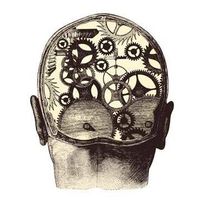Google’s Veo and Imagen 3: A New Era in AI-Generated Content
December 4, 2024, 10:11 pm
In the fast-paced world of technology, Google is making waves again. The tech giant has unveiled two powerful tools: Veo and Imagen 3. These innovations are set to redefine how we create and consume visual content. With the launch of these models on Vertex AI, Google is not just keeping pace; it’s leading the charge in the realm of artificial intelligence.
Veo is a game-changer. It’s an AI model that generates lifelike videos from text or images. Imagine typing a simple prompt and watching a high-definition video come to life. This model can produce cinematic-quality videos at 1080p resolution, with frame rates of 24 or 30 frames per second. It’s like having a Hollywood director at your fingertips. The creative possibilities are endless.
The model understands cinematic language. It can interpret terms like “timelapse” or “aerial shots.” This level of sophistication allows users to craft narratives that flow seamlessly. Picture a dog in a video, wagging its tail and hopping around joyfully. That’s the magic of Veo. It takes a static image and transforms it into a dynamic story.
But Veo isn’t alone. Imagen 3 is also stepping into the spotlight. This text-to-image AI model produces stunning visuals from natural language prompts. It’s like having an artist who can paint your ideas in real-time. Imagen 3 excels in detail, lighting, and composition. It captures the essence of a scene, rendering fine details like wrinkles or textures with precision.
Both models are available on Vertex AI, Google’s managed platform for machine learning. This platform is designed for everyone, from tech-savvy developers to those just starting their AI journey. It’s a toolbox filled with resources, making it easier to build and deploy AI applications.
Veo and Imagen 3 open doors for various industries. Marketing and advertising are prime beneficiaries. Companies can create high-quality assets quickly and efficiently. Imagine a team generating product images and converting them into polished videos in a fraction of the time it used to take. This speed boosts creativity and reduces costs, allowing brands to iterate on their strategies rapidly.
The integration of these models into Google Cloud is significant. It positions Google as the first major cloud provider to offer a video generation model. This move is a strategic response to competitors like Amazon and Microsoft, who are also racing to enhance their AI capabilities.
Amazon recently introduced its Nova family of foundation models, which includes video generation tools. This competition is heating up. Google’s Veo and Imagen 3 are not just tools; they are catalysts for innovation. They empower businesses to rethink how they create and deliver visual content.
Safety is a priority with these models. Both Veo and Imagen 3 include digital watermarking features. This technology helps identify AI-generated content, reducing the risk of misinformation. As AI-generated visuals become more lifelike, the need for transparency grows. Google’s commitment to safety ensures that users can trust the content they create.
Early adopters of these technologies are already seeing results. Companies like Mondelez International are harnessing the power of AI to streamline their content production. The efficiency gained allows them to produce customized assets at scale. This is a win-win for creativity and productivity.
The implications of Veo and Imagen 3 extend beyond marketing. They can revolutionize education, entertainment, and even journalism. Imagine educators creating engaging video lessons with ease. Picture filmmakers generating storyboards in real-time. The potential applications are vast and varied.
As Google continues to innovate, the landscape of AI-generated content will evolve. The introduction of Veo and Imagen 3 marks a significant milestone. These tools are not just about generating images and videos; they are about empowering creativity. They allow users to express their ideas in new and exciting ways.
In conclusion, Google’s Veo and Imagen 3 are more than just AI models. They are transformative technologies that will shape the future of content creation. As businesses and individuals embrace these tools, the possibilities are limitless. The world of visual storytelling is about to get a lot more dynamic. Google is leading the way, and the journey has just begun.
Veo is a game-changer. It’s an AI model that generates lifelike videos from text or images. Imagine typing a simple prompt and watching a high-definition video come to life. This model can produce cinematic-quality videos at 1080p resolution, with frame rates of 24 or 30 frames per second. It’s like having a Hollywood director at your fingertips. The creative possibilities are endless.
The model understands cinematic language. It can interpret terms like “timelapse” or “aerial shots.” This level of sophistication allows users to craft narratives that flow seamlessly. Picture a dog in a video, wagging its tail and hopping around joyfully. That’s the magic of Veo. It takes a static image and transforms it into a dynamic story.
But Veo isn’t alone. Imagen 3 is also stepping into the spotlight. This text-to-image AI model produces stunning visuals from natural language prompts. It’s like having an artist who can paint your ideas in real-time. Imagen 3 excels in detail, lighting, and composition. It captures the essence of a scene, rendering fine details like wrinkles or textures with precision.
Both models are available on Vertex AI, Google’s managed platform for machine learning. This platform is designed for everyone, from tech-savvy developers to those just starting their AI journey. It’s a toolbox filled with resources, making it easier to build and deploy AI applications.
Veo and Imagen 3 open doors for various industries. Marketing and advertising are prime beneficiaries. Companies can create high-quality assets quickly and efficiently. Imagine a team generating product images and converting them into polished videos in a fraction of the time it used to take. This speed boosts creativity and reduces costs, allowing brands to iterate on their strategies rapidly.
The integration of these models into Google Cloud is significant. It positions Google as the first major cloud provider to offer a video generation model. This move is a strategic response to competitors like Amazon and Microsoft, who are also racing to enhance their AI capabilities.
Amazon recently introduced its Nova family of foundation models, which includes video generation tools. This competition is heating up. Google’s Veo and Imagen 3 are not just tools; they are catalysts for innovation. They empower businesses to rethink how they create and deliver visual content.
Safety is a priority with these models. Both Veo and Imagen 3 include digital watermarking features. This technology helps identify AI-generated content, reducing the risk of misinformation. As AI-generated visuals become more lifelike, the need for transparency grows. Google’s commitment to safety ensures that users can trust the content they create.
Early adopters of these technologies are already seeing results. Companies like Mondelez International are harnessing the power of AI to streamline their content production. The efficiency gained allows them to produce customized assets at scale. This is a win-win for creativity and productivity.
The implications of Veo and Imagen 3 extend beyond marketing. They can revolutionize education, entertainment, and even journalism. Imagine educators creating engaging video lessons with ease. Picture filmmakers generating storyboards in real-time. The potential applications are vast and varied.
As Google continues to innovate, the landscape of AI-generated content will evolve. The introduction of Veo and Imagen 3 marks a significant milestone. These tools are not just about generating images and videos; they are about empowering creativity. They allow users to express their ideas in new and exciting ways.
In conclusion, Google’s Veo and Imagen 3 are more than just AI models. They are transformative technologies that will shape the future of content creation. As businesses and individuals embrace these tools, the possibilities are limitless. The world of visual storytelling is about to get a lot more dynamic. Google is leading the way, and the journey has just begun.

